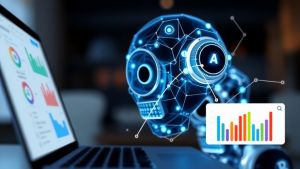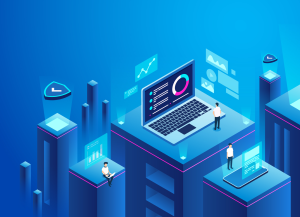Human + Machine Cybersecurity Automation is redefining modern cyber defense. Discover how humans and AI work together to enhance threat detection, automate incident response, reduce alert fatigue, and build predictive cybersecurity systems in 2025 and beyond.

-
Introduction
-
The Rise of Cybersecurity Automation
-
Human Intelligence: The Irreplaceable Context Layer
-
AI & Automation: The Tireless Workforce
-
The Hybrid Human-AI SOC Model
-
Reducing Alert Fatigue with Automation
-
Case Study: Hybrid SOC Success
-
Challenges in Human-AI Collaboration
-
The Future of Cybersecurity Teams
-
Best Practices for Human-AI Security
-
Conclusion
-
External Resources
-
Internal Links
The era of Human + Machine Cybersecurity Automation has transformed how organizations protect digital ecosystems. In an age where cyber threats evolve at machine speed, modern security teams rely on a hybrid defense model where human intuition pairs with AI-driven automation to detect, analyze, and respond to threats faster than ever before.
In today’s hyperconnected digital world, cybersecurity has evolved from a technical discipline into a critical business function. Threat landscapes are expanding, attack vectors are multiplying, and adversaries are leveraging artificial intelligence to outpace traditional defense systems. Against this backdrop, the role of cybersecurity automation has emerged as both indispensable and transformative.
Yet, the idea that machines can entirely replace human analysts is a misconception. The most effective cybersecurity systems are not fully autonomous but collaborative ecosystems, where human intelligence and machine precision complement each other. This hybrid model—Human + Machine—represents the pinnacle of modern cyber defense: a partnership that blends human intuition with algorithmic scalability.
The next phase of digital security isn’t about choosing between automation and human expertise—it’s about synchronizing them to create adaptive, self-optimizing protection frameworks that respond to evolving threats in real time.
The Rise of Cybersecurity Automation
Automation in cybersecurity is not new, but its sophistication has surged exponentially with the integration of artificial intelligence (AI), machine learning (ML), and security orchestration, automation, and response (SOAR) platforms.
Legacy systems relied on manual alert triage and reactive threat mitigation—an unsustainable model in a world generating billions of security events daily. Modern automation tools such as Cortex XSOAR, Splunk SOAR, and IBM QRadar can now autonomously correlate alerts, identify anomalies, and even execute containment workflows.
Automation’s growing role in security is driven by four key factors:
- Data Explosion – The sheer scale of logs, telemetry, and alerts exceeds human analytical capacity.
- Speed Requirements – Cyber threats unfold in milliseconds; humans alone can’t respond that fast.
- Resource Constraints – The global cybersecurity talent shortage (over 4 million unfilled positions in 2025) makes automation a necessity.
- Complex Environments – Cloud-native architectures, IoT, and remote ecosystems require constant, scalable monitoring.
However, automation is not infallible—it excels in pattern recognition and process execution, but it lacks the context, creativity, and strategic judgment of the human mind.
This is where the synergy begins.
Human Intelligence: The Irreplaceable Layer of Context

While AI can process petabytes of threat data, humans provide context, interpretation, and ethical reasoning—dimensions machines cannot yet replicate.
1. Analytical Judgment
Human analysts possess the cognitive flexibility to distinguish between malicious intent and benign anomalies. For example, a sudden spike in network traffic might be flagged as an intrusion by an algorithm, but a human expert can identify it as legitimate application scaling.
2. Strategic Foresight
Cybersecurity isn’t just operational—it’s strategic. Humans can anticipate geopolitical threats, evaluate the business impact of vulnerabilities, and align security priorities with organizational goals.
3. Ethical and Legal Oversight
Automated responses must comply with data privacy laws, ethical frameworks, and regulatory mandates. Humans ensure that automated systems operate within acceptable moral and legal boundaries.
4. Adaptive Creativity
Attackers innovate continuously. Humans can design new detection methods, update playbooks, and train AI models against emerging threats—something automation alone cannot do.
Human analysts are, therefore, not being replaced but repositioned—from manual operators to strategic orchestrators of automated defense.
AI and Automation: The Tireless Workforce
Automation, when designed intelligently, enhances security operations across several critical dimensions:
1. Real-Time Threat Detection
AI-driven monitoring tools continuously analyze log streams, network flows, and endpoint telemetry to detect threats instantly. Platforms like Microsoft Sentinel and CrowdStrike Falcon Fusion use ML models that learn from past incidents to predict and prevent future attacks.
2. Automated Incident Response
SOAR systems execute pre-defined response playbooks—such as isolating infected hosts, blocking IP addresses, or revoking compromised credentials—within seconds of detection.
This shift from manual intervention to machine-speed response drastically reduces Mean Time to Respond (MTTR), minimizing business disruption.
3. Alert Prioritization and Correlation
Automation tools can consolidate thousands of alerts into a single incident report by correlating related events. This reduces alert fatigue—a pervasive issue that leads to overlooked breaches.
4. Continuous Compliance Monitoring
AI systems track regulatory metrics and flag potential compliance deviations in real time. Automation ensures adherence to frameworks like ISO 27001, NIST, and GDPR without human micromanagement.
5. Predictive Analytics
Advanced machine learning models predict potential vulnerabilities or attack vectors before they occur, enabling proactive security posturing rather than reactive response.
The Hybrid Human-AI SOC Model
The Security Operations Center (SOC) of the future is neither fully manual nor entirely autonomous. It’s a hybrid—a coordinated ecosystem where machines handle the routine while humans manage the exceptional.
Tiered Workflow in a Hybrid SOC
| Tier | Responsibility | Role of AI | Role of Human |
| Tier 1 | Alert ingestion, triage | Automates sorting, filtering, correlation | Oversight and contextual validation |
| Tier 2 | Incident response | Executes playbooks, isolates systems | Decision-making for complex incidents |
| Tier 3 | Threat hunting, forensics | Provides data enrichment | Conducts deep analysis and strategy |
| Tier 4 | Governance and optimization | Monitors metrics | Designs policies, trains AI models |
This partnership allows for an adaptive SOC, where AI continuously improves from human feedback—creating a virtuous cycle of learning and resilience.
Reducing Alert Fatigue: A Core Benefit of Automation
Alert fatigue—the constant bombardment of false positives and redundant warnings—is one of the biggest threats to cybersecurity performance. Studies show that over 60% of SOC alerts go uninvestigated due to volume and burnout.
AI-driven automation mitigates this by:
- Filtering noise: Eliminating duplicate or low-risk alerts.
- Clustering incidents: Merging related events for contextual clarity.
- Prioritizing by impact: Ranking alerts by business criticality.
- Providing actionable insights: Offering suggested remediation steps automatically.
With fewer distractions, human analysts can focus on strategic tasks like threat hunting, red teaming, and defense optimization—functions that add long-term value rather than firefighting daily noise.
Case Study: A Financial Institution’s Hybrid SOC

A leading multinational bank implemented a hybrid SOC powered by Splunk SOAR and IBM Watson for Cybersecurity.
Before automation:
- Analysts manually reviewed 15,000 daily alerts.
- Average response time: 42 minutes.
After AI integration:
- Automated filtering reduced manual alerts by 78%.
- Mean Time to Detect (MTTD) dropped to under 5 minutes.
- Human teams could focus on 10% of incidents that truly required investigation.
The result? Improved security posture, reduced operational costs, and dramatically higher analyst satisfaction.
Challenges in Implementing Human-AI Collaboration
Despite its promise, hybrid automation introduces new challenges:
- Model Bias & Transparency – AI decisions must be explainable to ensure trust.
- Overreliance Risk – Excessive automation may desensitize teams to manual skill-building.
- Integration Complexity – Orchestrating multiple tools across cloud and on-prem systems requires meticulous design.
- Continuous Training Needs – AI systems must evolve alongside threat landscapes and human expertise.
The key lies in structured governance—clear escalation pathways, periodic audits, and ongoing training ensure the balance remains effective.
The Future of Cybersecurity Teams: Intelligence Amplified

As we approach 2026 and beyond, the cybersecurity workforce will increasingly transition from “manual operators” to “intelligence amplifiers.”
Future SOCs will look like mission control centers—humans orchestrating fleets of intelligent agents, drones, and automated responders. Skills like AI ethics, data science, and behavioral analytics will become as vital as traditional security certifications.
Human expertise will shift toward proactive threat anticipation, strategic risk modeling, and AI governance—roles that no algorithm can fully replicate.
Best Practices for Building a Human-AI Partnership
- Adopt SOAR Gradually: Begin with automating repetitive tasks before scaling to incident orchestration.
- Train Continuously: Upskill analysts in AI literacy and data interpretation.
- Ensure Explainability: Choose tools that offer transparent AI reasoning.
- Measure Metrics: Track KPIs like MTTD, MTTR, and analyst efficiency post-automation.
- Foster Collaboration: Encourage human oversight in all automated workflows to prevent blind trust.
- Simulate Scenarios: Conduct hybrid SOC drills combining human and machine response simulations.
Conclusion: The Symbiosis of Human and Machine
The age of cybersecurity automation is not the age of human obsolescence—it’s the dawn of human augmentation.
Machines excel at speed, scale, and consistency. Humans excel at creativity, judgment, and ethical reasoning. Together, they form an unbreakable defense fabric.
The organizations that thrive in the digital future will not be those that automate everything—but those that automate intelligently, empowering humans to focus on strategy while machines handle execution.
Summary: Key Takeaways
- The Human + Machine model is the cornerstone of modern cybersecurity resilience.
- Automation tools reduce alert fatigue, enhance response time, and strengthen compliance.
- Human analysts remain vital for strategic interpretation, contextual insight, and ethical oversight.
- A hybrid SOC merges automation efficiency with human adaptability for unmatched security performance.
- The future belongs to organizations that balance automation with human intelligence—transforming cybersecurity from a reactive function into a predictive, self-healing ecosystem.


